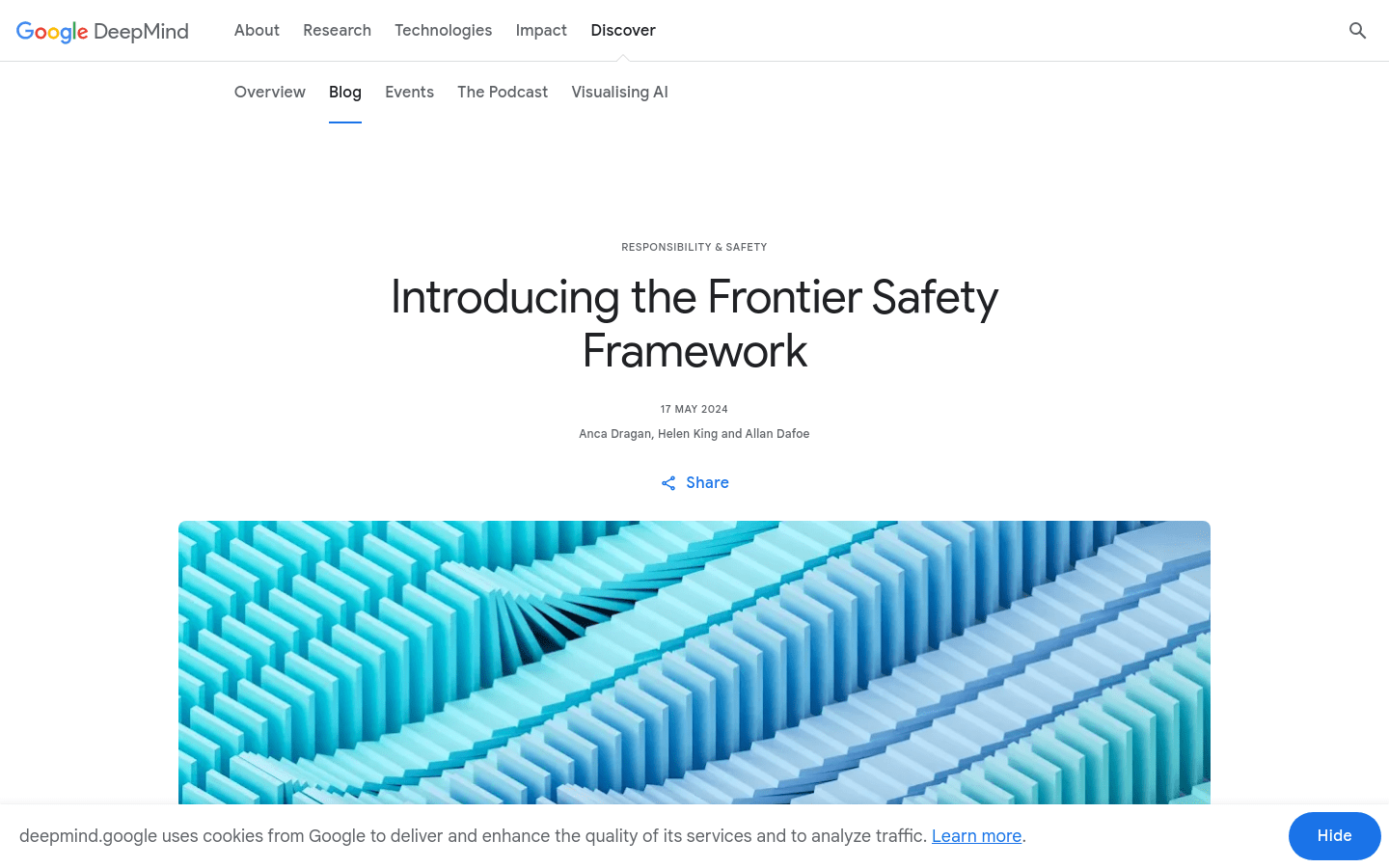

Frontier Safety Framework
Overview :
Frontier Safety Framework is a set of protocols proposed by Google DeepMind to proactively identify potential situations where future AI capabilities could lead to severe harm and establish mechanisms to detect and mitigate these risks. The framework focuses on model-level powerful capabilities, such as exceptional agency or sophisticated networking capabilities. It is intended to complement our alignment research, which aims to train models to act according to human values and societal goals, as well as Google's existing AI responsibility and safety practices.
Target Users :
This framework is aimed at AI researchers, developers, and organizations and policymakers concerned about AI safety and ethics. It offers a methodology for assessing and mitigating AI risks, helping them build safer and more human-aligned AI systems.
Use Cases
Used to evaluate the potential risks of AI models in the field of autonomous driving.
In drug discovery, ensure that AI model recommendations do not lead to unforeseen side effects.
In economic productivity enhancement, prevent AI model decisions from leading to unfair or unethical outcomes.
Features
Determine the potential for a model to cause serious harm.
Periodically evaluate cutting-edge models for reaching key capability thresholds.
Apply mitigation plans when models pass the warning assessment.
Based on four initial key capability levels: autonomy, biosecurity, cybersecurity, and machine learning research and development.
Tailor the intensity of mitigation measures to each key capability level.
Invest in frontier risk assessment science and continuously refine the framework.
Adhere to Google's AI Principles, regularly reviewing and updating the framework.
How to Use
Step 1: Determine the potential for a model to cause serious harm.
Step 2: Periodically evaluate cutting-edge models for reaching key capability thresholds.
Step 3: Develop a warning assessment toolkit to alert when models approach key capability thresholds.
Step 4: Apply mitigation plans based on overall benefit-risk balance and expected deployment environment when models pass the warning assessment.
Step 5: Tailor the intensity of mitigation measures to each key capability level.
Step 6: Invest in frontier risk assessment science and continuously refine the framework.
Step 7: Adhere to Google's AI Principles, regularly reviewing and updating the framework.
Featured AI Tools

Walker AI
Walker AI offers a variety of tools, including AI safety, art, and music, to empower industries and simplify creative processes. These tools encompass content risk control, game risk control, solutions, intelligent anti-fraud, cloud SMS, information authentication, manual review, AI drawing creation, AI model training, two-dimensional to three-dimensional conversion, ICON generation, 3D reduction, 2D to 3D conversion, and scene switching. The product is positioned to provide professional content and business security services, empowering industries and making artistic creation simpler. Pricing varies depending on the chosen functionalities.
AI Safety
85.3K

Pyrit
PyRIT, a Python risk identification tool developed by Azure, is designed to assist security professionals and machine learning engineers in proactively detecting risks within their Generation AI systems. This tool automates AI red team tasks, allowing operators to focus on more complex and time-consuming tasks while also identifying safety and privacy hazards.
AI Safety
57.7K






